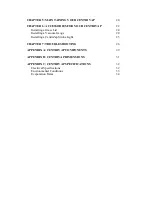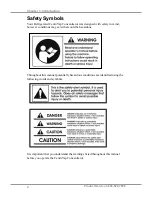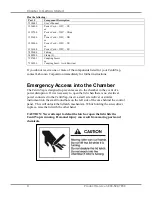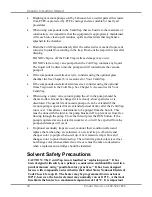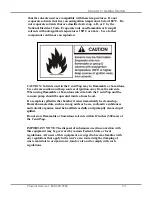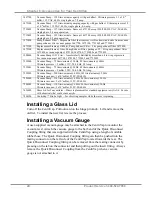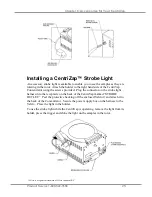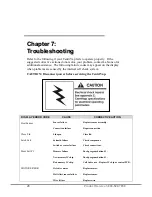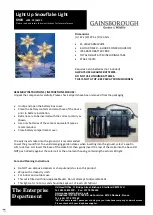
Chapter 3: Getting Started
Product Service 1-800-522-7658
12
Diaphragm vacuum pumps sold by Labconco have wetted parts either made
from PTFE or protected by PTFE coatings and are suitable for nearly all
procedures.
When using compounds in the CentriVap that are hostile to the materials of
construction, it is imperative that the equipment is appropriately maintained.
After each run, clean up all residues, spills and materials that might have
splashed in the chamber.
Drain the Cold Trap immediately after the collected ice is melted to prevent
corrosive liquids from residing in the trap. Flush out the trap with water after
draining.
DO NOT chip ice off the Cold Trap walls as damage may occur.
DO NOT start a rotary vane pump when the Cold Trap contains any liquid.
The liquid will be drawn into the pump and will contaminate the vacuum
pump oil.
If the compounds used attack acrylic, consider using the optional glass
chamber lid. See Chapter 6: Accessories for Your CentriVap.
If the compounds used attack stainless steel, consider using the optional
Glass Trap insert in the Cold Trap. See Chapter 6: Accessories for Your
CentriVap.
When using a rotary vane vacuum pump the oil in the pump should be
checked often. It must be changed if it is cloudy, shows particles or is
discolored. The useful life of vacuum pump oil can be extended if the
vacuum pump is operated for an extended period of time after the CentriVap
run is over. This allows contaminants to be purged from the hot oil. This
must be done with the inlet to the pump blocked off to prevent air from free
flowing through the pump. Close the lid and press the RUN button. If the
pump is operated at an elevated vacuum level, oil will be expelled from the
pump and damage will occur.
If optional secondary traps are used, monitor their condition often and
replace them when they are saturated. A new acid trap is off-white and
changes color to purple when used up. A new moisture trap is blue and
changes color to pink when used up. The solvent trap molecular sieve does
not change color when saturated so extra care must be taken to determine
when a replacement cartridge should be installed.
Solvent Safety Precautions
CAUTION: The CentriVap is not classified as “explosion proof.” It has
been designed with safety as a primary
consideration
and should be used in a
prudent manner using “good laboratory practices.” It has been designed
for use with compounds as described in the United States National Electrical
Code Class I, Group D. The heater may be programmed to run as hot as
100°C, however, the heater element may normally run at 110°C. A thermal
fuse limits the heater to a maximum temperature of 141°C. It is important
Summary of Contents for CentriVap 73100 Series
Page 1: ...CentriVap Refrigerated Centrifugal Concentrators Models 73100 Series...
Page 31: ...Chapter 7 Troubleshooting Product Service 1 800 522 7658 27...
Page 35: ...Appendix A CentriVap Refrigerated Concentrator Components Product Service 1 800 522 7658 31...
Page 36: ...Appendix A CentriVap Components Product Service 1 800 522 7658 32...
Page 37: ...Product Service 1 800 522 7658 33 Appendix B CentriVap Refrigerated Concentrator Dimensions...



